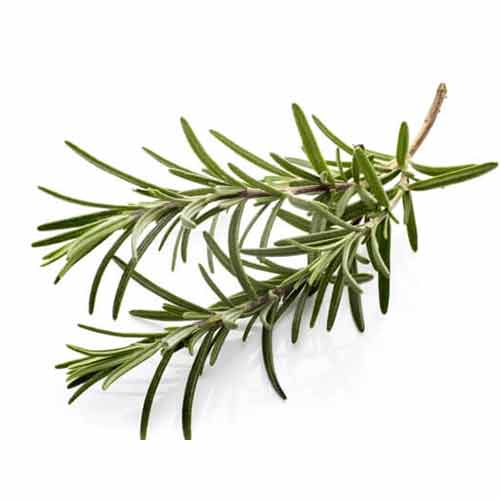Rosemary CO2-se extract, Cineol Type
Product-No.: 027.005
Raw Material:
Salvia rosmarinus – Leaves, dried
Production:
By supercritical fluid extraction with natural carbon dioxide, no solvent residues, no inorganic salts, no heavy metals, no reproducible microorganisms [1].
Ingredients:
see specification
Application:
Traditional Use: Rosemary (Rosmarinus officinalis) has been used in Europe since ancient times as tonic, stimulant, and carminative to treat dyspepsia, headaches and nervous tension. The ancient Greeks used it to strengthen memory function and concentration. In India, rosemary leaves are used in Ayurvedic Medicine for treatment of flatulent dyspepsia associated with psychogenic tension and migraine headaches.In Cosmetics & Hair Care:The essential oil of Rosemary leaves is used in oils and lotions for treatment of various health disorders like arthritis, gout, muscular pain, neuralgia and rubbed into hair for stimulating the hair bulbs to renewed activity and to prevent premature baldness [2].In Oral Care: Rosmarinus officinalis essential oil with its major components 1,8-cineole, camphor, alpha-pinene, verbenone, beta-caryophyllene and beta-myrcene shows good efficacy against cariogenic bacteria, particularly Streptococcus sobrinus and Streptococcus salivarius [3].In Food Supplements: Rosemary essential oil is used for treating dyspepsia and mild spasmodic disorders of the gastrointestinal tract, as well as an adjuvant in the relief of minor muscular and articular pain and in minor peripheral circulatory disorders [4]. A larger number of in vitro and in vivo studies provide evidence that Rosemary essential oil has anticancer [5], antidepressant [6], anti-inflammatory and antinociceptive [7], antimicrobial [8], antioxidant [9], DNA protective [10] and cognition-enhancing activities [11].Results of an animal trial demonstrate that rosemary essential oil, cineol type, beside exhibiting free radical scavenging activity determined by DPPH assay, mediates hepatoprotective effects through activation of physiological defense mechanisms [12].In Food:Rosemary essential oil is used in food preservation due to its antioxidant and antimicrobial activities [13-14].*
Literature:
[1] P. Manninen, E. Häivälä, S. Sarimo, H. Kallio : Distribution of microbes in supercritical CO2 extraction of sea buckthorn (Hippophae rhamnoides) oils : Zeitschrift für Lebensmitteluntersuchung und -Forschung / Springerverlag (1997) 204: 202-205
[2] Committee on Herbal Medicinal Products (HMPC), European Medicines Agency (EMA) : Community herbal monograph on Rosmarinus officinalis L., aetheroleum : EMA/HMPC/235453/2009
[3] Wolfgang Blascheck u.a. (Hrsg.) : HagerROM 2017, Hagers Enzyklopädie der Arzneistoffe und Drogen : Suttgart: Wissenschaftliche Verlagsgesellschaft Stuttgart, 2017
[4] Bernardes WA, Lucarini R, Tozatti MG, Flauzino, LG, Souza, MG, Turatti, IC, Andrade e Silva, ML, Martins, CH, da Silva Filho, AA, Cunha, WR, : Antibacterial activity of the essential oil from Rosmarinus officinalis and its major components against oral pathogens : Z. Naturforschung C, 65, 588-593, 2010
